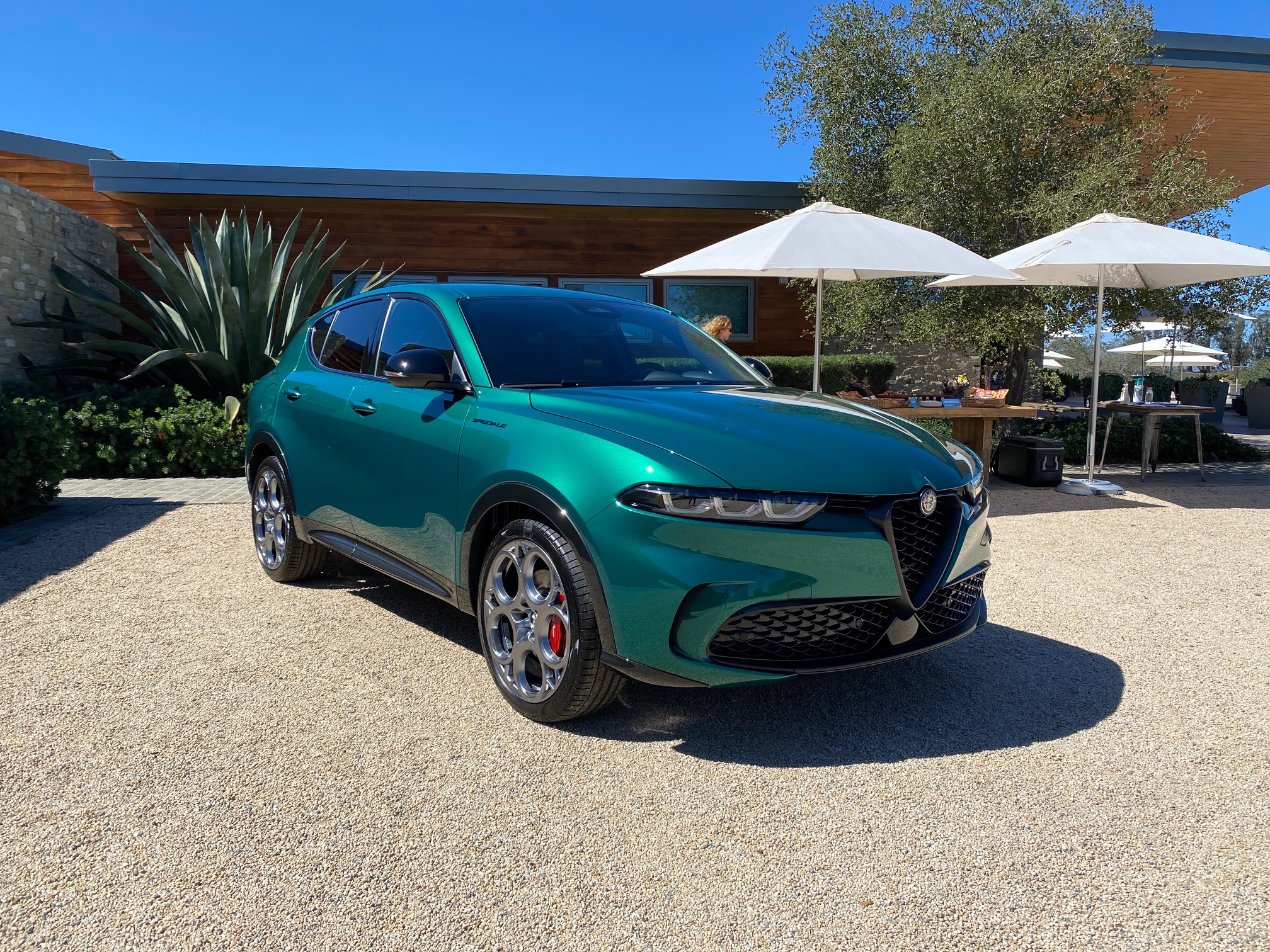

Iconic Italian automaker Alfa Romeo is all in on the electrification train, claiming its spot as the first brand under the Stellantis umbrella (created through the merger of car companies Fiat Chrysler Automobiles and Peugeot S.A.) to go all electric by 2027.
Alfa Romeo revealed its ambitious plan to release five new vehicles in the next six years, and the first model on that list will be an electrified crossover, the Tonale. This new plug-in hybrid will be available to customers in the US in early 2023 as part of Alfa Romeo’s transition to an EV brand.
With its Dare Forward 2030 strategy, which it announced on March 1, Stellantis committed to selling more than 75 different kinds of battery-electric vehicles, or BEVs. That includes Jeep’s first fully battery-electric SUV launching in early 2023, followed by the Ram ProMaster BEV later next year and the Ram 1500 BEV pickup truck in 2024. Stellantis is also targeting carbon net zero emissions by 2038. Even Alfa Romeo’s stablemate Dodge, famous for producing gas-guzzling muscle cars, is on board with the shift and plans to sell its first fully electric performance model in 2024.
Some Stellantis brands have been paving the way towards full electrification by first offering a series of hybrids. For example, Jeep’s Wrangler and Grand Cherokee models are available as plug-in hybrids and have been selling quite well. Meanwhile, Americans looking for a rugged EV pickup now have a new option in GMC’s just-announced Sierra EV, competing with the upcoming Ram EV and Chevrolet Silverado EV along with Ford’s already-available F-150 Lightning.
[Related: Carmakers are pouring billions into producing EV batteries]
The whole trajectory is leaps and bounds away from where executives thought it was heading as recently as a year ago.
It’s an especially sharp turn for Stellantis CEO Carlos Tavares, who said at the start of 2022 in an interview that he felt that “electrification is a technology chosen by politicians, not by industry.” However, the industry’s race toward electrification is sweeping up everything in its path, and the pressure from policymakers, as well as the public, are mounting. Many big car makers have stated that they’re onboard, despite progress being slower than expected.
“The people have decided: we will be purely electric,” the company’s European Head Uwe Hochschurtz declared during an interview this month.
And it seems that most are in favor of Alfa Romeo’s metamorphosis. After the global reveal of the Tonale PHEV in February, a flood of curious virtual tire-kickers made their way to the Alfa Romeo website to learn more. Surprisingly, about 82 percent of website visitors checking out the Tonale are new to Alfa Romeo. This statistic is a good sign for Senior Vice President and Head of Alfa Romeo and Fiat North America Larry Dominique, since the company’s, and industry’s, move to electric cars will require the 113-year-old brand to cater to a new buyer demographic.
Alfa Romeo is profitable and stable for the first time in several years, Dominique says, riding the success of the Giulia performance sedan and the Stelvio SUV. The brand has promised its fealty to the popular Giulia, which will become an EV at some point in the coming year or two.
“We will still build a flagship sedan and Giulia will be electrified,” Dominique told MotorTrend’s Alissa Priddle in an interview in May.
While the Stelvio seems to be the logical second act, it seems the production of the all-new Tonale may open the door to other innovations. Currently, Alfa Romeo’s Formula One team is running with a Ferrari V6 turbo hybrid engine in its cars, and Alfa’s production engineering team worked closely with its F1 engineers and drivers to create the Tonale from the ground up. These synergies may spawn a reimagining of the electric-vehicle course as the line between racing and mass production blurs, cross-pollinating the Italian performance brand across the board.
Head of Alfa Romeo’s F1 group Cristiano Fiorio told PopSci at the Grand Prix in Austin that he fully supports the CO2 reduction goals Stellantis set. The future, for him, is clear.
“It’s very easy for me because I have two kids, 7 and 11 [years old], and we owe them because we have not done our job [to reduce carbon emissions],” Fiorio said. “Now we don’t have time to wait. There is no other way.”